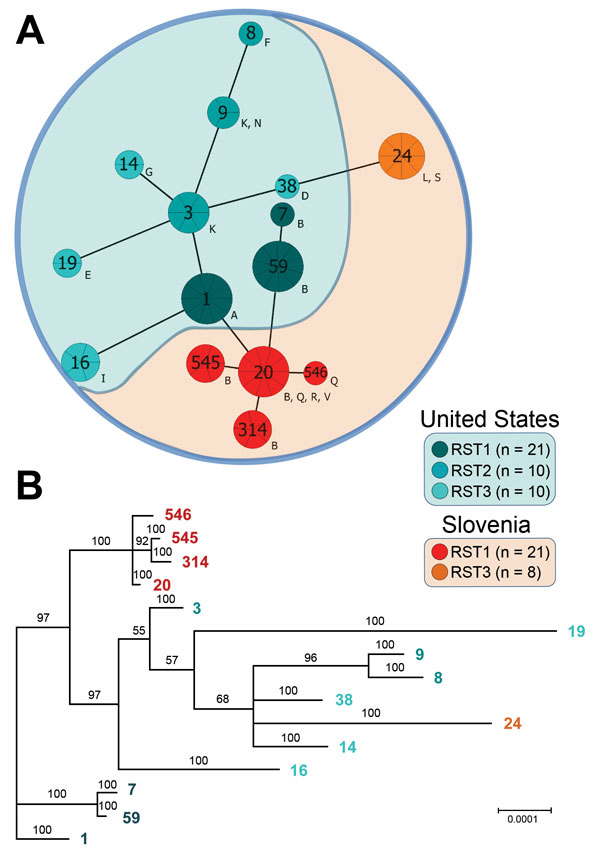Volume 22, Number 5—May 2016
Research
Differences in Genotype, Clinical Features, and Inflammatory Potential of Borrelia burgdorferi sensu stricto Strains from Europe and the United States
Figure 2

Figure 2. Phylogenetic analysis of Borrelia burgdorferi sensu stricto strains from central Europe (Slovenia) and the United States. A) Minimum spanning tree analysis of 70 isolates included in this study. Sequence types (STs) are indicated by numbers, and outer surface protein types are indicated by letters. Sizes of circles indicate ST sample sizes. Lengths of lines connecting STs indicate extent of variation (order of certainty) (no. locus variants). STs connected by the shortest black line are single-locus variants. Letters outside circles indicate OspC types. RST, ribosomal RNA intergenic spacer. B) Bayesian consensus tree resulting from simultaneous analysis of concatenated sequences of 8 housekeeping genes (clpA, clpX, nifS, pepX, pyrG, recG, rplB, and uvrA). Values at nodes indicate Bayesian posterior probabilities (proportion of sampled trees containing the taxon bipartition). Scale bar indicates nucleotide substitutions per site.
1These authors contributed equally to this article.